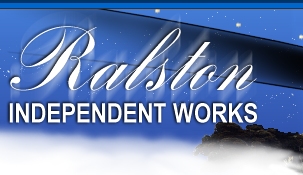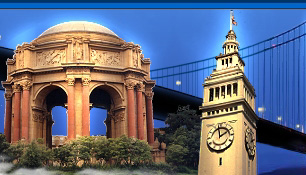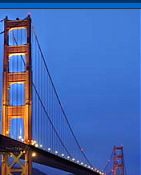|
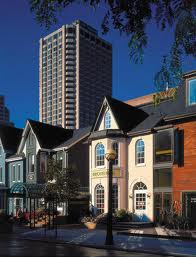 The
TIAW conference in Toronto took place in the historic Yorkville
area. York, the colonial town, was laid out in the 1790s when the
provincial capital from Niagara-on-the-Lake was moved. The citizens
constructed many of their churches and mansions in Georgian Style. The
TIAW conference in Toronto took place in the historic Yorkville
area. York, the colonial town, was laid out in the 1790s when the
provincial capital from Niagara-on-the-Lake was moved. The citizens
constructed many of their churches and mansions in Georgian Style.
Four Seasons Hotel
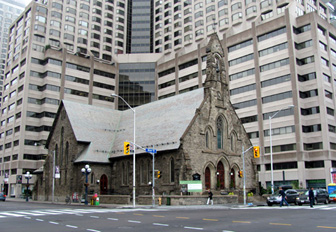
This Yorkville church is just few steps from the hotel Four Seasons,
where the first day of the conference was held. This image is taken
at the corner of Avenue Road and Bloor Street. Bloor Street is named
for Joseph Bloor, the original developer of this area in the last
century.
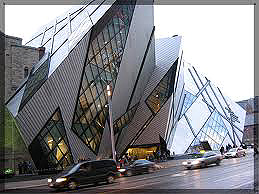
The Royal Ontario Museum
On the southwest corner of Bloor and Avenue Road is
the Royal Ontario Museum. The Royal Ontario Museum (ROM) is the
largest natural history museum in Canada. Founded in 1912, the museum
has maintained close relations with the University of Toronto throughout
its history. A new crystalline-form expansion was designed by architect
Daniel Libeskind.
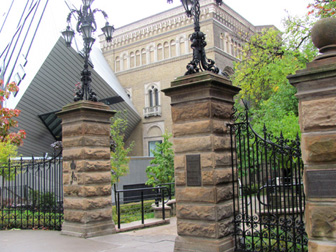
The Alexandra Gates
The Alexandra Gates were built in 1901 to commemorate the visit
of Prince George, Duke of Cornwall, and Mary, Duchess of Cornwall.
It is situated at the beginning of Philosopher's Walk. On the left
you can see the right side of the Royal Ontario Museum, perched
against the wall of the original museum.
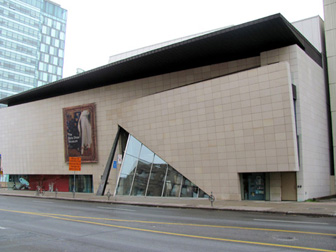
The Bata Shoe Museum
The Bata Shoe Museum, at the corner of Bloor and St.
George, is dedicated to one of the least pretentious subjects for
a museum, shoes. But when you consider that people have been wearing
shoes for thousands of years, a museum that documents the history
of shoes makes sense.
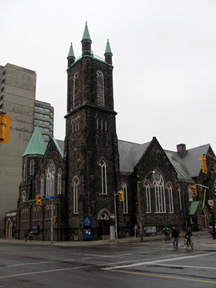
This Gothic revival church is located across from Bata Shoe Museum,
near the intersection with Huron Street, and was designed by architect
William R. Gregg in 1887.
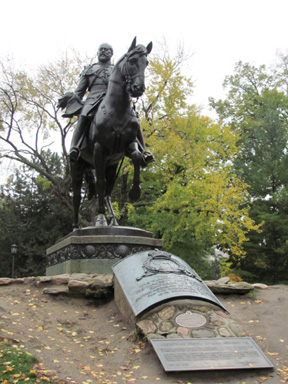
Before our lunch at C 5 restaurant at the Royal Ontario Museum,
I had a quick walk in Toronto Queens Park. The Equestrian Statue
of King Edward VII on his horse Kildare was moved here from India
in May 1969.
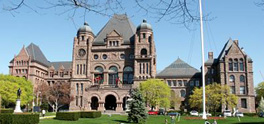
Known as the Ontario Legislative Building (and sometimes the Parliament
Building), this impressive structure sits in Queens Park. Built
at a cost of $1.4 million, the architect for the project was Richard
A. Waite, an Englishman who was - at that time - living in nearby
Buffalo, New York. His style is often described as Richardsonian
Romanesque, but many Canadians found the structure to be too American,
reflecting many of the styles found "south of the border."
But while the building may have seemed "American" in style,
nothing but Canadian materials were used in its construction, including
more than 10 million bricks of pink sandstone.
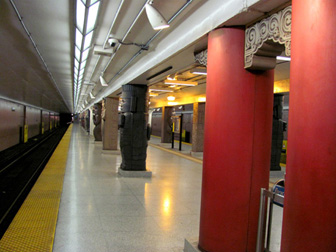 I
still had a few hours Sunday afternoon and took a subway from the
attractive Museum station to Casa Loma. Casa Loma castle reminded
me of Craigdarroch castle in Victoria, British Columbia. I
still had a few hours Sunday afternoon and took a subway from the
attractive Museum station to Casa Loma. Casa Loma castle reminded
me of Craigdarroch castle in Victoria, British Columbia.
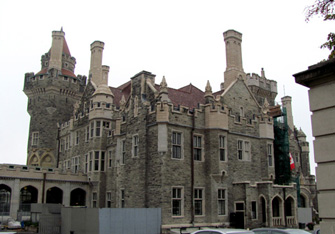 I
am always intrigued by castles' stories, and didn't mind climbing
the 27-meter Baldwin Steps from Spadina Avenue above the Annex,
the neighborhood where you would want to buy a house these days.
Casa Loma's owner Sir Henry Mill Pellatt was a prominent financier,
industrialist and military man. He founded the Toronto Electric
Light Company and built the first hydrogenerating plant at Niagara
Falls. I
am always intrigued by castles' stories, and didn't mind climbing
the 27-meter Baldwin Steps from Spadina Avenue above the Annex,
the neighborhood where you would want to buy a house these days.
Casa Loma's owner Sir Henry Mill Pellatt was a prominent financier,
industrialist and military man. He founded the Toronto Electric
Light Company and built the first hydrogenerating plant at Niagara
Falls.
In 1911 Sir Henry and his wife Lady Pellat hired the noted architect
E.J. Lennox to create a 'medieval' castle of the Edwardian era with
98 rooms but were able to enjoy the castle less than 10 years, before
losing their money. In 1937, the city purchased the property. The
Toronto Kiwanis Club volunteered to operate it and continues to
do so today.
Please click link below for more images in the castle:
Casa Loma
Ximena and Lana experience
on the tour bus
Niagara Falls
Niagara-on-the-Lake
day
Back to the page 1 of the conference
Back to Ralston Independent Works Home
Page
|
